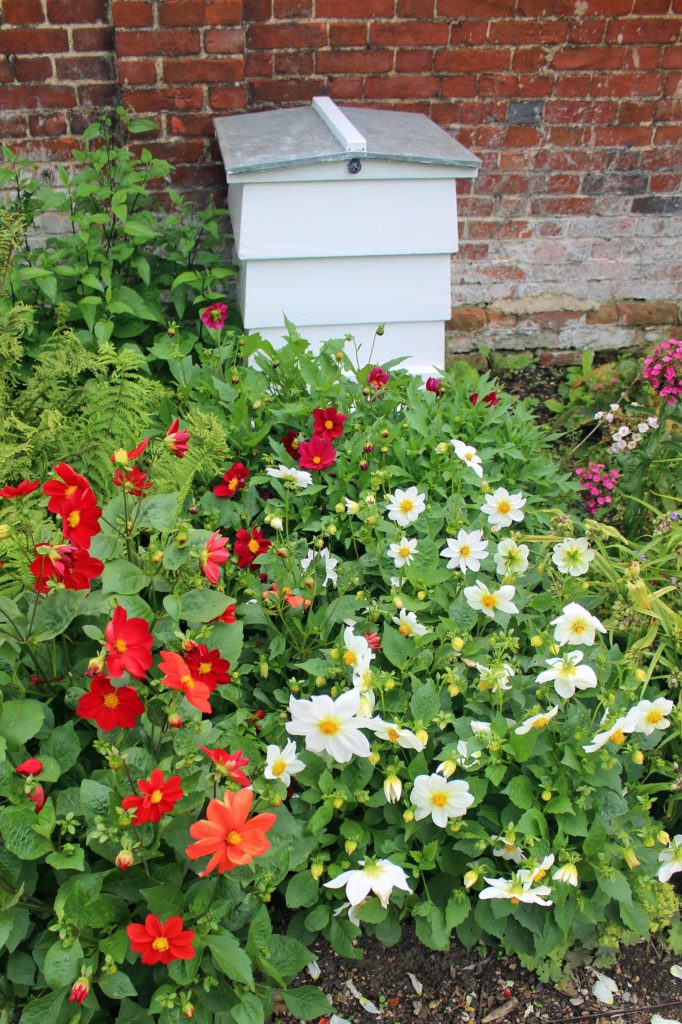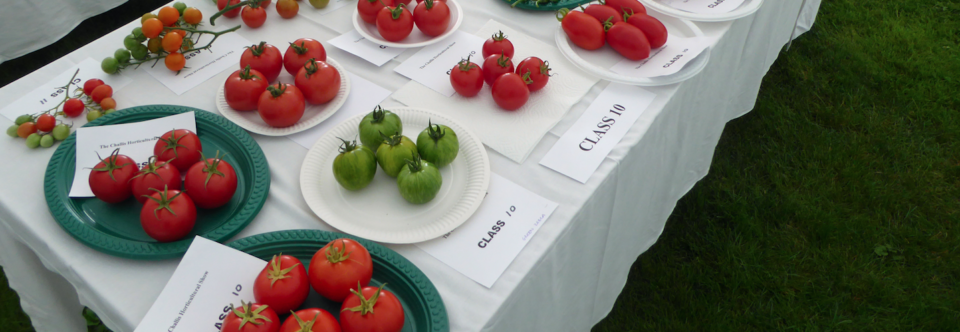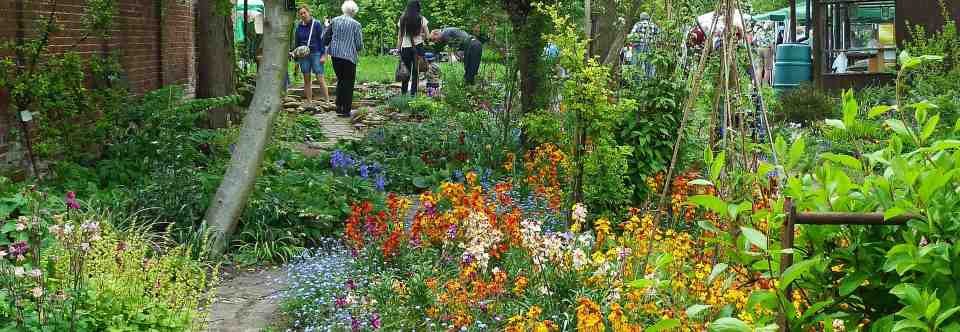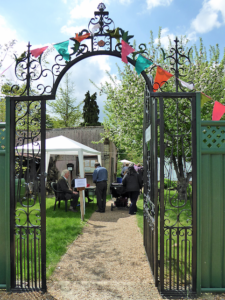"The best-kept secret in Sawston – a walled garden with two acres of trees and flowers..."
Open Tuesday, Thursday and Saturday 9.30am to 12.30pm; Sunday 1pm to 3pm (November to March) or 2pm to 4pm (April to October).
November 2017
 As the days shorten and the trees lose their leaves, we are still enjoying the late autumn colours in the garden. The colourful display in the herbaceous beds lasted late into the autumn, but dahlias and bedding plants succumbed to the first sharp frost of the season on 6th November. Asters and penstemons survived to leave some colour into the month. The frost accelerated the leaf-fall from the larger mature trees, which had given some lovely displays of colour up to that point. The garden team is now busily sweeping and hoovering up these leaves, which will create lots of leaf-mould for mulching the beds next autumn.
As the days shorten and the trees lose their leaves, we are still enjoying the late autumn colours in the garden. The colourful display in the herbaceous beds lasted late into the autumn, but dahlias and bedding plants succumbed to the first sharp frost of the season on 6th November. Asters and penstemons survived to leave some colour into the month. The frost accelerated the leaf-fall from the larger mature trees, which had given some lovely displays of colour up to that point. The garden team is now busily sweeping and hoovering up these leaves, which will create lots of leaf-mould for mulching the beds next autumn.
Colours are developing in the winter/spring walk. The brightly coloured stems of the dogwoods (Cornus sp.) are showing well now. Visitors in the next few months will be able to enjoy the fragrance from the winter and early spring-flowering shrubs, such as Mahonia, Hamamelis (witch hazel), shrub honeysuckle, Viburnum fragrans and winter box (Sarcococca confusa). Beyond that we look forward to the spring bulbs – snowdrops and bluebells are already emerging through the leaf litter.
Visitors to the garden often comment on our composting arrangements. We are very committed to recycling as much organic material as possible in the garden. Leaf litter is compacted in two large metal cages, watered periodically to help decomposition and left for about 12 months. This results in a very friable mulch that is returned to the established beds. Almost everything else is added to the compost bins, which are turned twice (more often would be better, but it’s hard work!) and is ready to use after eighteen to twenty-four months. We produce more compost than we need, so there is usually a small surplus available for anyone who wants to come and fill a few bags.
The quantity of material that cannot be composted and needs to be burnt is getting less and less each year: mostly ivy, very fibrous material, thorny stems and diseased plants. Regular bonfires used to be a common feature in the early years, but we only need to burn once a year now, at most. We choose a suitable day when the wind is in the right direction to carry the smoke away from neighbouring buildings. Dead or very decayed material is added to an ‘eco-pile’ to rot down, creating a great habitat for many types of wildlife.
The Challis Trust has taken delivery of seven sculptures by the Sawston sculptor Douglas Jeal (see page 5 of the April–May 2017 issue). We are very grateful to the Jeal family for this generous gift. The sculptures will be placed around the garden in suitable locations. These will add interest to the garden and we hope that visitors will enjoy seeing them. Indeed, we would be very pleased to accept other artworks for display, temporary or permanent, on loan or as a donation. Please get in touch with us if you have anything to offer.
 Our Halloween event ‘Spooky Saturday’ was popular as ever and very well attended. We really enjoy seeing the garden used in this way; it makes all the hard work worthwhile. Many thanks to everyone who came and to our volunteers for helping out. The attendance was so good this year that we ran out of some supplies early on. We apologise to anyone who was disappointed – we will make sure there is plenty of everything next year!
Our Halloween event ‘Spooky Saturday’ was popular as ever and very well attended. We really enjoy seeing the garden used in this way; it makes all the hard work worthwhile. Many thanks to everyone who came and to our volunteers for helping out. The attendance was so good this year that we ran out of some supplies early on. We apologise to anyone who was disappointed – we will make sure there is plenty of everything next year!
This year, for the first time, we are holding a Christmas wreath-making workshop on the morning of Saturday 2nd December, from 10am to 12.30pm. All materials will be provided and the wreaths made under tuition from Catherine Tregaskes of Greener Sawston. This is a bookable event, limited to fourteen places at £15 each; please email events@challistrust.org.uk if you’d like to book a place. We may hold a second session is there is enough interest. Mike Redshaw
Read More




